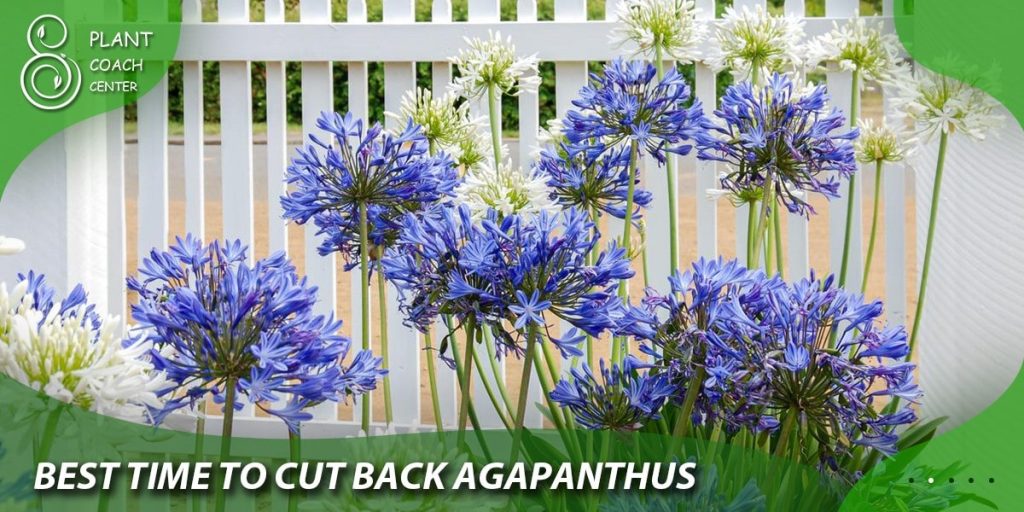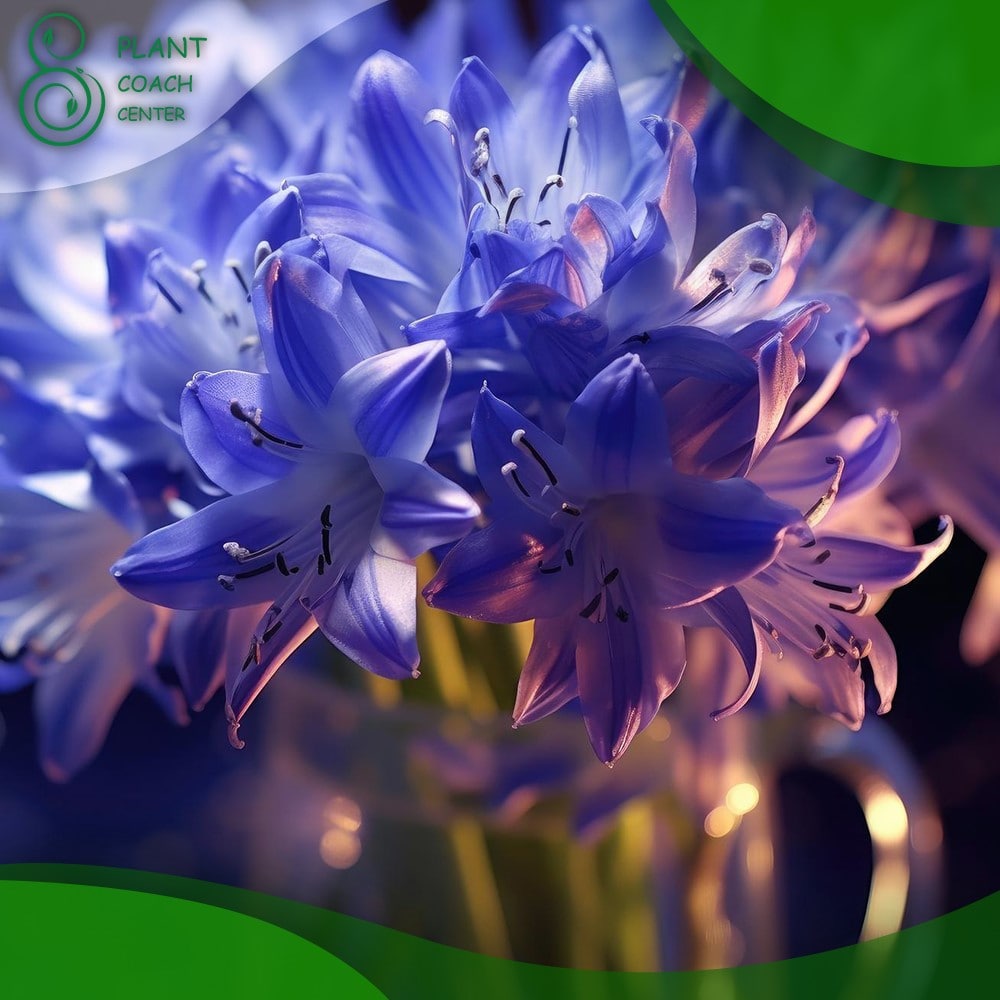Caring for plants is a rewarding endeavor that requires knowledge, patience, and proper maintenance. One particular plant that garners attention is the Agapanthus, known for its stunning blooms and vibrant foliage.
In this comprehensive guide, we will explore the art of plant coaching, focusing specifically on Agapanthus and the crucial topic of when to cut it back. By understanding the Agapanthus growth cycle, the significance of cutting back, and addressing common problems, you’ll gain valuable insights into maintaining healthy and flourishing Agapanthus plants.
Understanding Agapanthus Growth Cycle
Agapanthus plants go through distinct stages of growth, which directly influence their overall health and development. By familiarizing yourself with these stages, you can better assess when and how to perform necessary maintenance tasks, such as cutting back. Additionally, several factors can affect Agapanthus growth, including environmental conditions, soil quality, and the plant’s overall health.

The Significance of Cutting Back Agapanthus
Pruning or cutting back Agapanthus serves several essential purposes:
It helps maintain the plant’s appearance by removing spent flower stalks and foliage, resulting in a neater and more visually appealing plant.
Cutting back encourages the plant to redirect its energy toward producing new blooms and foliage, promoting vigorous growth and preventing the plant from becoming too crowded.
Regular pruning contributes to overall plant health by reducing the risk of diseases and pests.
Determining the Right Time to Cut Back Agapanthus:
Timing is crucial when cutting back Agapanthus, as it ensures optimal results and prevents any potential harm to the plant. The appropriate timing varies depending on the plant’s growth stage and the season. Let’s explore the different seasons and their respective pruning considerations.
- Spring Pruning
As the weather starts to warm in spring, Agapanthus plants begin to emerge from their winter dormancy. This is an ideal time to perform cutting back, as it allows for the removal of any frost-damaged foliage and stimulates new growth. During spring pruning, focus on removing dead or damaged leaves, spent flower stalks, and any old or overcrowded divisions.
- Summer Pruning
Summer pruning primarily revolves around deadheading, which involves removing spent flowers to prevent the formation of seeds. By deadheading regularly, you encourage the plant to produce additional blooms, prolonging the flowering period. Additionally, removing spent flower stalks improves the overall aesthetic appeal of the plant.
- Fall/Winter Pruning:
As the growing season ends, Agapanthus enters a dormant period. Fall and winter pruning concentrate on tidying up the plant and preparing it for the next growing season. Remove any remaining flower stalks and foliage, cutting them back to ground level. This helps minimize potential disease or pest issues and ensures a fresh start in the following spring.
Signs and Indicators for Cutting Back
Besides considering the seasons, certain signs and indicators can guide you in determining when to cut back Agapanthus. These signs include the appearance of brown, withered foliage, the absence of new growth, or when the plant becomes excessively crowded. Regular observation and monitoring of your Agapanthus will allow you to identify these indicators and take appropriate action promptly.
Techniques and Methods for Cutting Back Agapanthus
Now that we have discussed the timing for cutting back Agapanthus let’s delve into the techniques and methods involved in the process. Proper execution of cutting back ensures optimal results and minimizes any potential harm to the plant.
Tools and Equipment Required
Before you begin cutting back your Agapanthus, it’s essential to gather the necessary tools and equipment. These include sharp and clean pruning shears or secateurs, gloves for hand protection, and a clean cloth or alcohol wipes for sterilizing your tools between cuts. Having the right tools ensures clean cuts and reduces the risk of spreading diseases or infections.

Step-by-Step Guide to Pruning Agapanthus
- Preparing the Plant for Pruning:
Start by inspecting the Agapanthus plant for any signs of pests, diseases, or damaged foliage. If you notice any issues, address them appropriately before proceeding with cutting back. It’s also beneficial to water the plant a day or two before pruning to ensure it is adequately hydrated.
- Selecting the Appropriate Pruning Technique:
There are two primary techniques for cutting back Agapanthus: the “haircut” method and the “individual stalk” method. The choice of technique depends on the size and condition of your plant, as well as your personal preference. The haircut method involves cutting back the entire plant to a uniform height, while the individual stalk method involves selectively removing spent flower stalks and damaged foliage.
- Cutting Back Agapanthus Stalks and Foliage:
For the haircut method, take your pruning shears or secateurs and trim the entire Agapanthus plant to a height of about 2-3 inches above ground level. Make clean cuts at a slight angle, just above a bud or leaf node. This method promotes a uniform and tidy appearance.
If you opt for the individual stalk method, identify the spent flower stalks and remove them by cutting them back to their base near the crown of the plant. Additionally, selectively remove any damaged or yellowing foliage by cutting it back to the base or where it meets a healthy leaf.
Best Practices for Optimal Cutting Back Results
To ensure the best possible outcome when cutting back Agapanthus, keep the following best practices in mind:
- Regularity: Make cutting back a regular practice, especially during the appropriate seasons. Regular pruning helps maintain plant health, encourages blooming, and prevents overcrowding.
- Hygiene: Practice good hygiene by sterilizing your tools between cuts to prevent the spread of diseases or infections. This can be done by wiping the blades with a clean cloth or using alcohol wipes.
- Adequate Timing: Choose the right time to cut back Agapanthus based on the plant’s growth stage and the season. This ensures that the plant is not stressed and allows for optimal regrowth.
- Observation and Monitoring: Continuously observe your Agapanthus for signs of new growth, pest infestations, or disease development. Promptly address any issues that arise to maintain plant health.
Addressing Common Agapanthus Problems
While Agapanthus is generally a resilient plant, it can still encounter various problems. Understanding and addressing these issues will contribute to the overall health and vitality of your Agapanthus plants.
Agapanthus Pests and Diseases
Agapanthus can be susceptible to pests such as aphids, snails, and slugs. These pests can cause damage to the foliage and blooms. Additionally, diseases like fungal leaf spots and root rot can affect Agapanthu’s health. It’s important to be able to identify common pests and diseases and implement effective control measures.
Identifying Common Pests
Aphids are small, sap-sucking insects that cluster on new growth. They can be green, black, or brown and may cause leaf distortion or discoloration. Snails and slugs leave slime trails and feed on foliage, leaving behind ragged edges on leaves.
Effective Pest Control Measures
To control aphids, you can spray a solution of water and mild dish soap on the affected parts of the plant or introduce natural predators like ladybugs. For snails and slugs, create physical barriers using copper tape or diatomaceous earth around the base of the plant. You can also handpick them off the plant in the evening when they are most active.
Disease Prevention and Management
To prevent fungal leaf spots, ensure proper air circulation around the plant and avoid overhead watering. Remove and dispose of any infected foliage promptly. For root rot prevention, make sure the soil has good drainage and avoid overwatering. If root rot is detected, consider repotting the plant in fresh, well-draining soil.
Agapanthus Nutrient Deficiencies
Agapanthus plants may exhibit symptoms of nutrient deficiencies, which can affect their growth and overall health. Common deficiencies include nitrogen, phosphorus, and potassium. Recognizing these symptoms is crucial in addressing the issue effectively.

Recognizing Symptoms of Nutrient Deficiencies:
Nitrogen deficiency is evident when the leaves turn pale or yellowish. Phosphorus deficiency causes stunted growth and dark-colored leaves. Potassium deficiency leads to brown leaf edges and poor flowering.
Soil Amendments and Fertilization Tips
To address nutrient deficiencies, amend the soil with organic matter, such as compost, to improve nutrient availability. Apply a balanced fertilizer or a specialized fertilizer formulated for flowering plants, following the manufacturer’s instructions. Regularly monitor the plant’s nutrient levels and adjust fertilization as needed.
Agapanthus Environmental Stressors
Agapanthus can be affected by various environmental stressors, which can hinder their growth and vitality. Understanding these factors and implementing proper care and maintenance practices will help mitigate stress.
Understanding Environmental Factors Affecting Agapanthus:
Agapanthus plants thrive in full sun to partial shade and require well-draining soil. They are generally drought-tolerant but appreciate consistent watering during dry spells. Extreme heat, frost, and excessive moisture can stress the plant.
Mitigating Stress through Proper Care and Maintenance
Provide adequate sunlight and shade based on the specific Agapanthus variety. Ensure proper irrigation practices, allowing the soil to dry out between waterings to prevent overwatering. Protect the plant from extreme weather conditions by providing shelter or using mulch around the base.
Maintenance Tips for Healthy Agapanthus
Apart from cutting back and addressing common problems, certain maintenance practices contribute to the overall health and well-being of Agapanthus plants.
- Watering Guidelines:
Agapanthus plants prefer moist but well-draining soil. Water the plants deeply, allowing the soil to dry out slightly between waterings. Avoid overwatering, as it can lead to root rot.
- Soil Requirements and Preparation:
Agapanthus thrives in well-draining soil rich in organic matter. Before planting, ensure the soil is loosened and amended with compost or well-rotted manure to improve drainage and nutrient availability.
- Sunlight and Shade Considerations:
Most Agapanthus varieties require full sun to partial shade for optimal growth and flowering. Provide the appropriate amount of sunlight based on the specific variety’s requirements.
- Feeding and Fertilizing Agapanthus:
Apply a balanced slow-release fertilizer in early spring to provide essential nutrients. Follow the manufacturer’s instructions for application rates and frequency. Avoid excessive fertilization, as it can lead to excessive foliage growth with limited blooms.
- Dividing and Transplanting Agapanthus:
Over time, Agapanthus can become overcrowded, leading to reduced flowering and overall vigor. Dividing and transplanting Agapanthus plants every few years rejuvenates them and promotes healthier growth. Perform this task during the dormant period, lifting the clump, dividing it into smaller sections, and replanting them at the appropriate spacing.

Agapanthus Varieties and Selection Tips
Agapanthus offers a wide range of varieties, each with its unique characteristics and requirements. Consider the following factors when selecting Agapanthus for your garden:
Popular Agapanthus Cultivars
There are numerous Agapanthus cultivars to choose from, including ‘Blue Storm,’ ‘Peter Pan,’ ‘Snowball,’ ‘Twister,’ and ‘Queen Mum.’ Research the specific features and growth habits of each cultivar to determine the best fit for your garden.
Factors to Consider When Choosing Agapanthus
Consider the mature size, flower color, and growth habits of the Agapanthus variety. Some cultivars are more compact and suitable for containers, while others are better suited for garden borders or mass plantings.
Matching Agapanthus Varieties with Garden Design:
Select Agapanthus varieties that complement your overall garden design, taking into account color schemes, plant heights, and blooming periods. Agapanthus can add visual interest and vibrant pops of color to mixed perennial beds, cottage gardens, or Mediterranean-inspired landscapes.
Last words
In conclusion, understanding when to cut back Agapanthus is crucial for maintaining healthy and thriving plants. By comprehending the Agapanthus growth cycle, the significance of cutting back, and addressing common problems such as pests, diseases, nutrient deficiencies, and environmental stressors, you can effectively care for your Agapanthus plants.
Remember to follow proper techniques and methods when cutting back, and implement maintenance practices like proper watering, soil preparation, and fertilization. With the right approach, your Agapanthus will reward you with beautiful blooms and lush foliage, adding charm and elegance to your garden.
For more information and helpful tips, visit plantcoachcenter.com.
When is the best time to cut back Agapanthus?
Timing depends on the season, with spring and fall being the ideal periods for cutting back.
How should I prune Agapanthus?
Use clean, sharp pruning shears to remove spent flower stalks and damaged foliage, cutting them back near the base or ground level.
Can I divide Agapanthus plants?
Yes, dividing Agapanthus every few years during the dormant period helps rejuvenate the plant and promote healthier growth.







